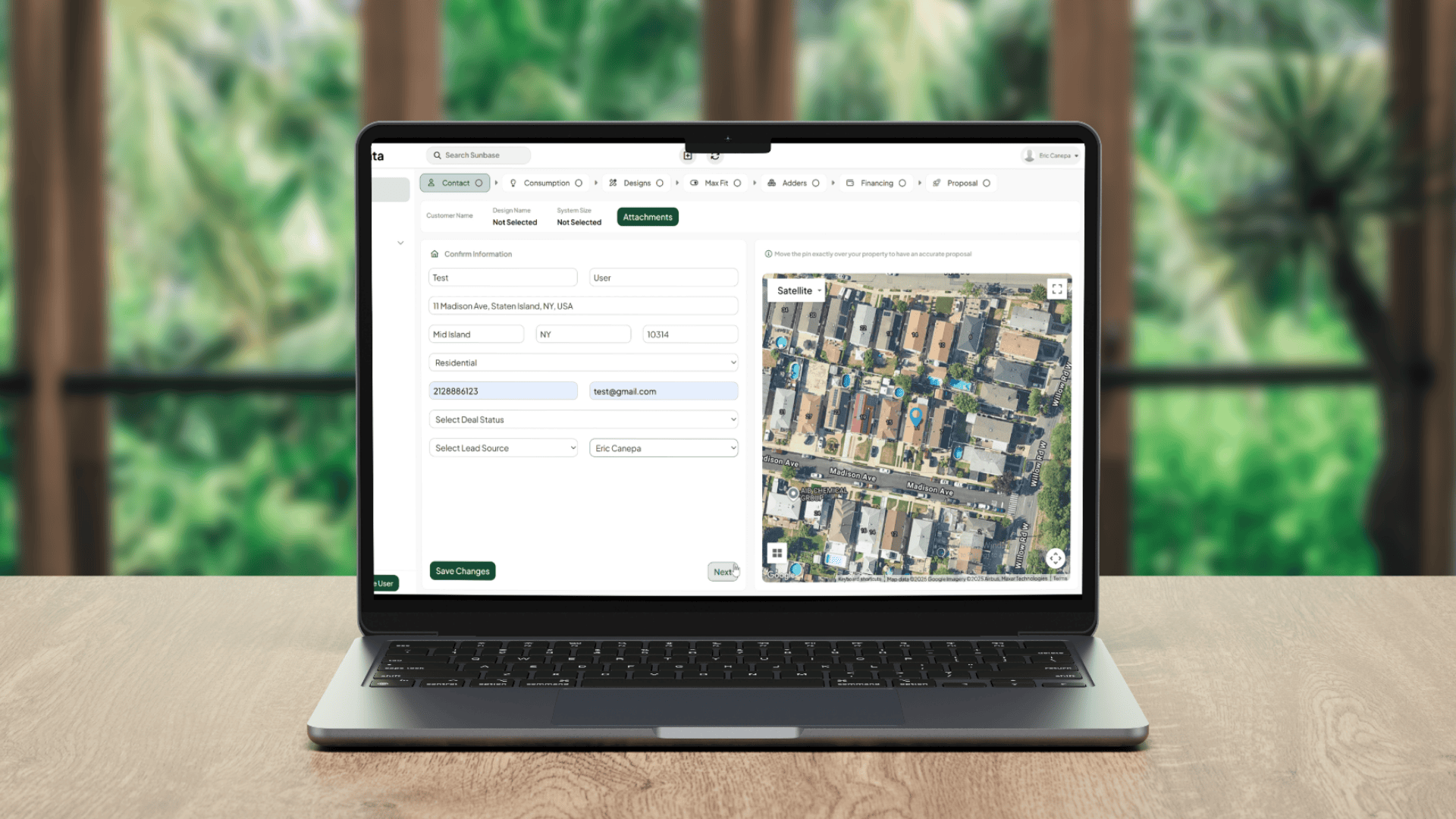May 10, 2023
Are you tired of manually nurturing leads, and spending countless hours crafting personalized emails and follow-up messages, only to see little to no results? Say hello to automated lead nurturing! By leveraging the power of technology, automated lead nurturing can save you time, increase efficiency, and ultimately boost your sales.
But what exactly is automated lead nurturing, and how can it benefit your business? In this article, we'll dive into the world of automated lead nurturing and show you how to harness its potential to take your business to the next level. Get ready to discover the future of lead nurturing and revolutionize the way you do business!
What is Automated lead nurturing?
Imagine having a personal assistant who not only takes care of all your tedious and time-consuming tasks but also knows exactly what your potential customers need and when they need it. That's what automated lead nurturing is all about! It's like having a digital salesperson who guides your leads through the buying process, from the moment they show interest to the point of purchase.
Automated lead nurturing is the art of using technology to create personalized and engaging experiences for your leads without needing constant manual intervention. It's a game-changing approach that can help you turn more leads into loyal customers, all while saving you time and resources.
Benefits of Automated lead nurturing
Picture this: your sales team is working at maximum capacity, your leads are pouring in, and your revenue is skyrocketing. Sounds too good to be true, right? But with automated lead nurturing, this dream can become a reality! The benefits of automated lead nurturing are numerous, and they go beyond simply increasing your sales numbers.
Save Time And Resources-
automated lead nurturing allows you to save time and resources. Instead of manually sending out emails and following up with each lead, you can set up automated workflows that do the heavy lifting for you. This means your team can focus on other tasks, such as generating more leads or closing deals.
Create Personalized Experiences-
automated lead nurturing enables you to create personalized experiences for each lead, without sacrificing scale. By segmenting your leads and tailoring your messaging to their unique needs and interests, you can increase engagement and build stronger relationships with your potential customers. This not only boosts your chances of making a sale but also enhances your brand reputation and loyalty.
Keeps You Up-To-Date
Another key benefit of automated lead nurturing is that it helps you stay top-of-mind with your leads throughout the buying journey. By sending out timely and relevant messages, you can educate your leads, address their concerns, and guide them toward the next step in the process. This can be particularly effective in industries with longer sales cycles, where it's important to maintain momentum and keep the conversation going.
Measure Efforts In Real Time
automated lead nurturing allows you to measure and optimize your efforts in real time. By tracking metrics such as open rates, click-through rates, and conversions, you can identify what's working and what's not, and make data-driven decisions to improve your results over time.
How Automated Lead Nurturing Works
Automated lead nurturing may sound like magic, but in reality, it's a well-designed and structured process that requires careful planning and execution. At its core, automated lead nurturing involves using technology to send relevant and personalized messages to your leads, based on their behavior and interests. Here's how it works in detail:
Lead Capture:
The first step in the automated lead nurturing process is capturing leads in your system. This can be done through various channels, such as website forms, social media, events, or purchased lists. It's important to ensure that your leads are properly segmented and categorized based on their characteristics and behaviors, as this will inform your messaging strategy later on.
Lead Scoring:
Once you have captured your leads, you need to assign a score to each lead based on their level of engagement and likelihood of conversion. Lead scoring is a crucial part of automated lead nurturing, as it allows you to prioritize your outreach efforts and tailor your messaging accordingly. You can use various criteria to score your leads, such as demographics, website activity, email opens, and downloads.
Email Workflow:
The heart of automated lead nurturing is the email workflow, which is a series of pre-written emails that are sent to your leads at specific intervals based on their behavior and interests. The key to creating effective email workflows is to focus on providing value to your leads and addressing their pain points, rather than just pushing your products or services. You can use various types of emails in your workflow, such as welcome emails, educational content, product demos, and special offers.
Lead Segmentation:
To maximize the effectiveness of your email workflows, you need to segment your leads based on their characteristics and behaviors. This allows you to tailor your messaging to each group and increase relevance and engagement. You can segment your leads based on various criteria, such as industry, company size, job title, website activity, and email engagement.
Lead Qualification:
As your email workflows engage with potential customers, you can employ different metrics to identify Qualified leads who are ready for sales. These metrics can consist of actions like requesting a demo, scheduling a call, or visiting pricing pages. Once a lead is identified as Qualified, they can be directed to your marketing and sales teams for further nurturing and closing.
Designing an Effective Automated Lead Nurturing Strategy
In today's fast-paced business world, the sales funnel offers a helpful framework for understanding the customer journey and the various stages of the buying process. With countless tools and technologies available to automate your lead nurturing efforts, it's important to choose the right ones to optimize your sales funnel and maximize your success. Here are some key factors to consider when selecting automated lead nurturing tools:
Integration:
One of the most important considerations when choosing automated lead nurturing tools is how well they integrate with your existing tech stack. Ideally, you want tools that can seamlessly integrate with your CRM, email marketing platform, and other systems, so that you can easily transfer data and automate workflows.
Features:
Different automated lead nurturing tools offer different features, so it's important to choose ones that align with your specific needs and goals. Some common features to look for include lead capture forms, lead scoring algorithms, email templates and workflows, segmentation, and personalization options, and analytics and reporting dashboards.
User-Friendliness:
Another important factor to consider is how user-friendly the tools are. The last thing you want is to spend hours trying to figure out a complex tool, or having to rely on IT support for every little thing. Look for tools that are intuitive, easy to navigate, and offer good documentation and customer support.
Scalability:
As your business grows, your lead nurturing needs will likely become more complex and sophisticated. Therefore, it's important to choose tools that can scale your business and accommodate your changing needs. Look for tools that offer flexible pricing plans, customizable workflows, and the ability to handle large volumes of data.
Budget:
Finally, the cost is always a consideration when choosing automated lead nurturing tools. While it's important to invest in quality tools that can drive results, you also want to ensure that you're getting a good return on your investment. Look for tools that offer transparent pricing, with no hidden fees or long-term contracts, and compare pricing and features across multiple vendors.
Tips for Implementing Automated Lead Nurturing
Implementing automated lead nurturing can be a daunting task, but with the right approach and tools, it can be a game-changer for your business. Here are some tips for implementing them:
Define Your Goals:
Before you begin, define your goals for your automated lead nurturing campaigns. These goals should be specific, measurable, and aligned with your overall marketing and sales objectives.
Develop Your Strategy:
Once you have defined your goals, develop a strategy for your automated lead nurturing campaign. This strategy should include details such as your target audience, messaging, content, timing, and segmentation criteria. Use your buyer personas and journey maps to inform your strategy.
Choose the Right Tools:
There are a variety of marketing automation tools available on the market, and it's important to choose the one that best meets your needs. Consider factors such as ease of use, integration with your existing systems, and the features that are most important to you.
Create Your Workflows:
With your strategy and tools in place, it's time to create your automated workflows. These workflows should be designed to guide your leads through the buyer's journey, from awareness to consideration to decision. Use segmentation criteria to tailor your messaging and content to the needs and interests of your leads.
Test and Refine:
As with any marketing effort, it's important to test and refine your automated lead-nurturing campaigns. Use A/B testing to experiment with different messaging, content, and workflows, and continuously monitor your metrics to identify areas of improvement.
Integrate with Sales:
To truly maximize the impact of your automated lead nurturing efforts, it's important to integrate with your sales team. Ensure that your sales teams are aligned with your marketing goals and are prepared to engage with leads at the appropriate time.
Measuring and Optimizing Automated Lead Nurturing
Automated lead nurturing can be a powerful tool for driving revenue and growth, but it's important to measure and optimize your efforts to ensure that you're getting the best results possible. Here are some key steps to follow:
Define Your Goals:
Before you start measuring and optimizing your lead nurturing campaigns, it's important to define your goals and objectives. These may include metrics such as lead conversion rates, sales pipeline velocity, or revenue generated. Once you have clear goals, you can track and measure your progress toward them.
Track Key Metrics:
To measure the success of your automated lead nurturing campaigns, you need to track key metrics such as email open rates, click-through rates, conversion rates, and revenue generated. This will allow you to identify areas of improvement and optimize your campaigns accordingly.
Analyze Your Data:
Once you have tracked your key metrics, it's important to analyze your data to identify patterns and trends. Look for insights such as which email workflows are most effective, which types of content resonate with your leads, or which segments are converting at the highest rates. Use these insights to refine your messaging and targeting strategies.
Test and Optimize:
Once you have analyzed your data and identified areas of improvement, it's time to test and optimize your campaigns. This may involve A/B testing different email subject lines, call-to-actions, or landing pages, or experimenting with different segmentation criteria. Continuously test and optimize your campaigns to ensure that you're always improving.
Report and Share Results:
Finally, it's important to report and share your results with your team and stakeholders. Use dashboards or reports to showcase your progress toward your goals, and highlight your key insights and optimization strategies. This will help to build buy-in and support for your automated lead nurturing efforts.
Automating Your Lead Nurturing: Tools and Best Practices
Automating your lead nurturing can be a game-changer for your business. However, it requires the right tools and best practices to be successful. Here are some tips for automating your lead nurturing:
Choose the Right Marketing Automation Tool:
There are many marketing automation tools available, and it's important to choose one that meets your specific needs. Consider factors such as pricing, ease of use, and the features that are most important to you.
Develop Your Lead Nurturing Strategy:
Before you begin automating your lead nurturing, develop a comprehensive lead nurturing strategy. This should include details such as your target audience, messaging, content, timing, and segmentation criteria.
Create Your Workflows:
With your lead nurturing strategy in place, create your automated workflows. These workflows should be designed to guide your leads through the buyer's journey, from awareness to consideration to decision.
Personalize Your Messaging and Content:
To make your lead nurturing more effective, personalize your messaging and content to meet the specific needs and interests of your leads. Use data such as demographics, behavior, and interactions to tailor your messaging.
Use Lead Scoring:
Lead scoring is a process that ranks leads based on their readiness to buy. Use lead scoring to prioritize your leads and focus on those that are most likely to convert.
Monitor and Refine:
Once your automated lead nurturing is up and running, it's important to monitor its performance and make adjustments as needed. Use analytics and metrics to measure your success and refine your strategy over time.
Integrate with Sales:
To truly maximize the impact of your lead nurturing efforts, it's important to integrate with your sales team. Ensure that your sales team is aligned with your marketing goals and is prepared to engage with leads at the appropriate time.
Conclusion
Automated lead nurturing is a powerful tool that can help businesses improve their sales and marketing efforts by leveraging marketing automation technology. By implementing automated lead nurturing strategies, businesses can personalize their messaging and content, optimize their workflows, and provide valuable insights and analytics.
To successfully nurture leads using automation, businesses must choose the right marketing automation tools, develop a comprehensive lead nurturing strategy, personalize their messaging and content, use lead scoring, monitor and refine their efforts, and integrate with sales.
The benefits of lead nurturing automation are many, including improved lead quality, increased sales, enhanced customer engagement, reduced sales cycles, increased efficiency, improved marketing, and sales alignment, and greater insights and analytics. By leveraging the power of marketing automation, businesses can create a more effective and efficient lead-nurturing engine that drives growth and success in today's competitive business landscape.
One Platform. Zero Chaos. Run Your Entire Business in One Place.
Sunbase replaces your CRM, proposals, scheduling, job tracking, and reporting tools — all inside one clean, connected platform.
About Sunbase
The All-In-One Platform to Run Your Entire Business
Sunbase helps you organize operations, streamline daily workflows, and manage everything - from first customer contact to final project deliver- in one connected system.
Our Mission
- Organize your business.
- Optimize your workflow.
- Automate what slows you down.
Why Businesses Choose Sunbase
One Connected Workflow
Replace scattered tools and manual processes with a single platform that brings together your team, tasks, customers, jobs, and performance data.
🌎 Global Presence
Serving the United States, Canada, India, LATAM, Australia, and 10+ international markets.
👥 11,000+ Users
Trusted by contractors, installers, project managers, sales teams, and field technicians.
🏗️ Built for All Sizes
From small contracting teams to fast-growing enterprises, Sunbase adapts to your workflow.
Useful Links For You
Stop Managing Your Business Manually. Automate It.
Sunbase automates workflows, reduces mistakes, and helps your team get more done - without hiring extra staff or juggling multiple tools.











